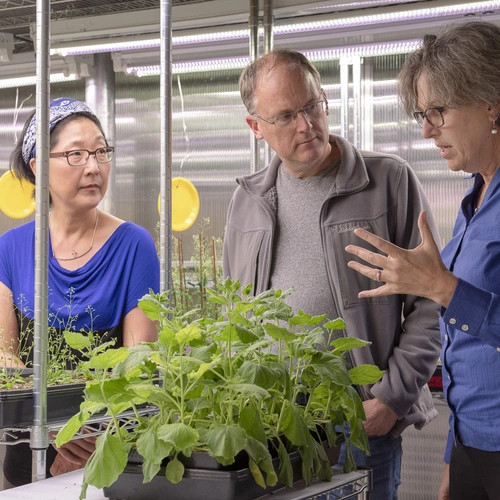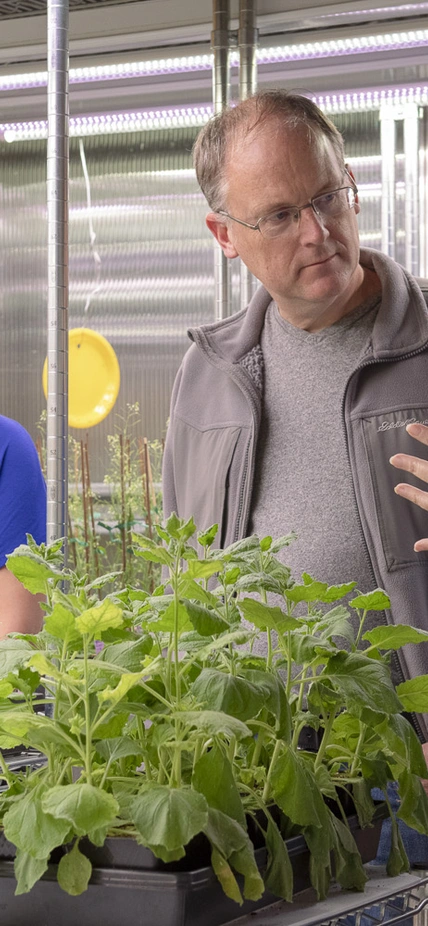Stanford, CA—For millennia, humanity has used medicinal plants and plant-based compounds to treat a variety of neurological ailments including epilepsy, mania, migraines, and bipolar disorder. Now a team of researchers from Carnegie and Stanford University is using microscopic worms to understand what these plant-derived molecules are and how they affect the brain’s biochemistry.
Called the NeuroPlant project, these efforts could lead to new, more efficient ways to develop drugs to treat a variety of neurological and psychiatric diseases in humans. Their work is funded by a Big Ideas grant from the Wu Tsai Neurosciences Institute.
“We’re interested in finding out what the mode of action is of these compounds from plants that have known effects on the human nervous system,” said Carnegie’s Sue Rhee, who is one of NeuroPlant’s principal investigators. “I think it’s an interesting place where we can potentially connect things like ethnobotany and plant science with neuroscience and perhaps even medicine.”
NeuroPlant is grounded in a simple observation: Plants have a powerful influence on our health and behavior. Around 80 percent of the world’s population relies on herbal medicine for their primary health care, and many modern drugs, including neurological drugs, are derived from plants. That got Rhee wondering: What molecules do plants produce that affect our health and behavior, and what exactly are those molecules doing to us?
In a conversation with Miriam Goodman, a Stanford professor of molecular and cellular physiology, Rhee learned that a tiny roundworm called C. elegans, which has about 75 percent genetic similarity to humans, could be the perfect platform for studying these questions, allowing the NeuroPlant team can study their behavior, nervous systems, and genetics all at once.
With Rhee’s expertise in plant biology, Goodman’s experience with C. elegans' sensory systems and the neurobiology and genetics expertise of Stanford collaborator Thomas Clandinin, the group thought they could pioneer a new approach to understanding the neurological effects of plant-derived compounds.
The team will start out by studying how the worms respond to extracts from the plant valerian, which has been used for thousands of years to treat mild anxiety and is currently used in epilepsy drugs. If the experiments work, the group will branch out to other plants that are the source of neurologic drugs.
The ultimate hope is to use these experiments not just to understand the genetic and neural pathways through which plant extracts and plant-derived drugs work, but also to discover new drugs. Right now, Goodman said, most drugs are developed by screening one small molecule at a time and focusing on just one genetic pathway at a time. If NeuroPlant’s approach works, it could allow researchers to screen many potential drugs at a time and look at how those drugs affect a plethora of genetic pathways all at once, potentially speeding the discovery of new treatments.
“I’m not expecting those chemicals to be drugs” that could actually treat disease, Goodman said. “But if we can identify targets, if we can identify chemicals, it becomes a productive entry point” for a new way to develop new drugs.

Caption: Sue Rhee, Thomas Clandinin and Miriam B. Goodman discuss the NeuroPlant project over a tobacco plant in the greenhouse. (Image credit: L.A. Cicero)
___
Original text courtesy of Stanford University.
